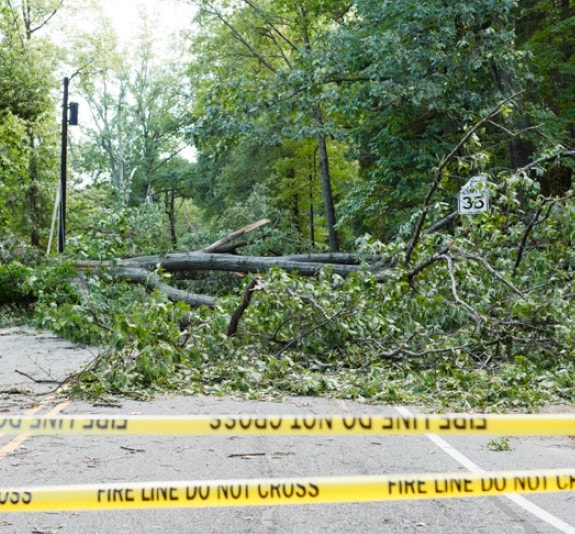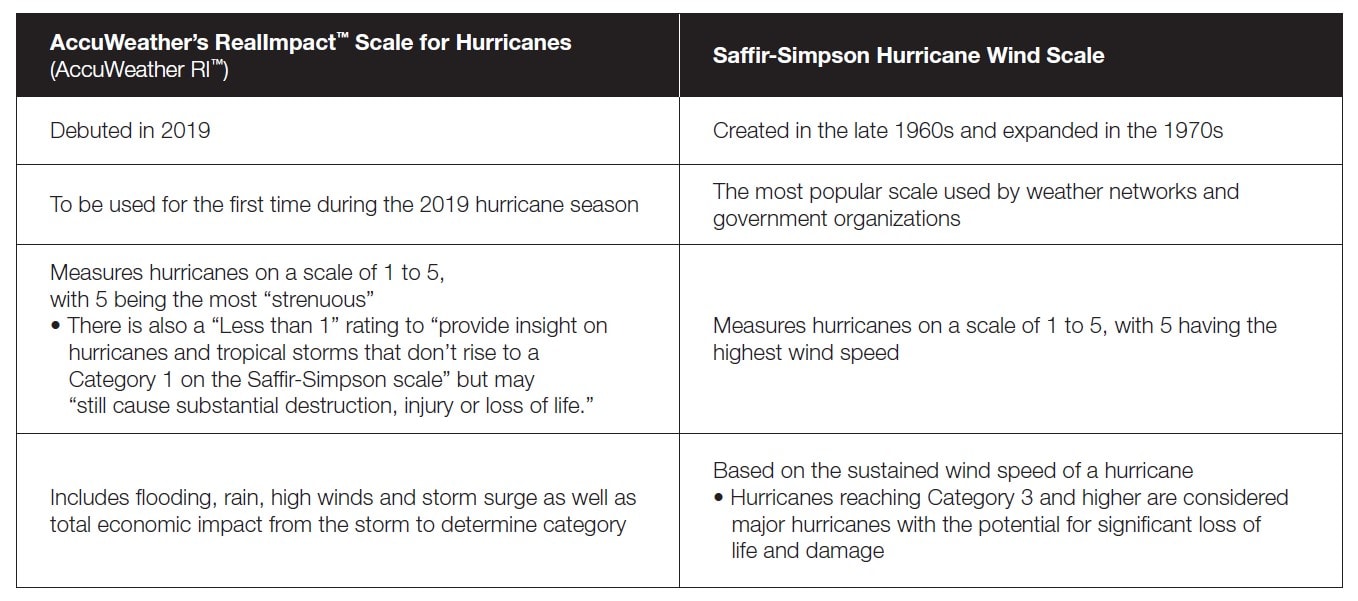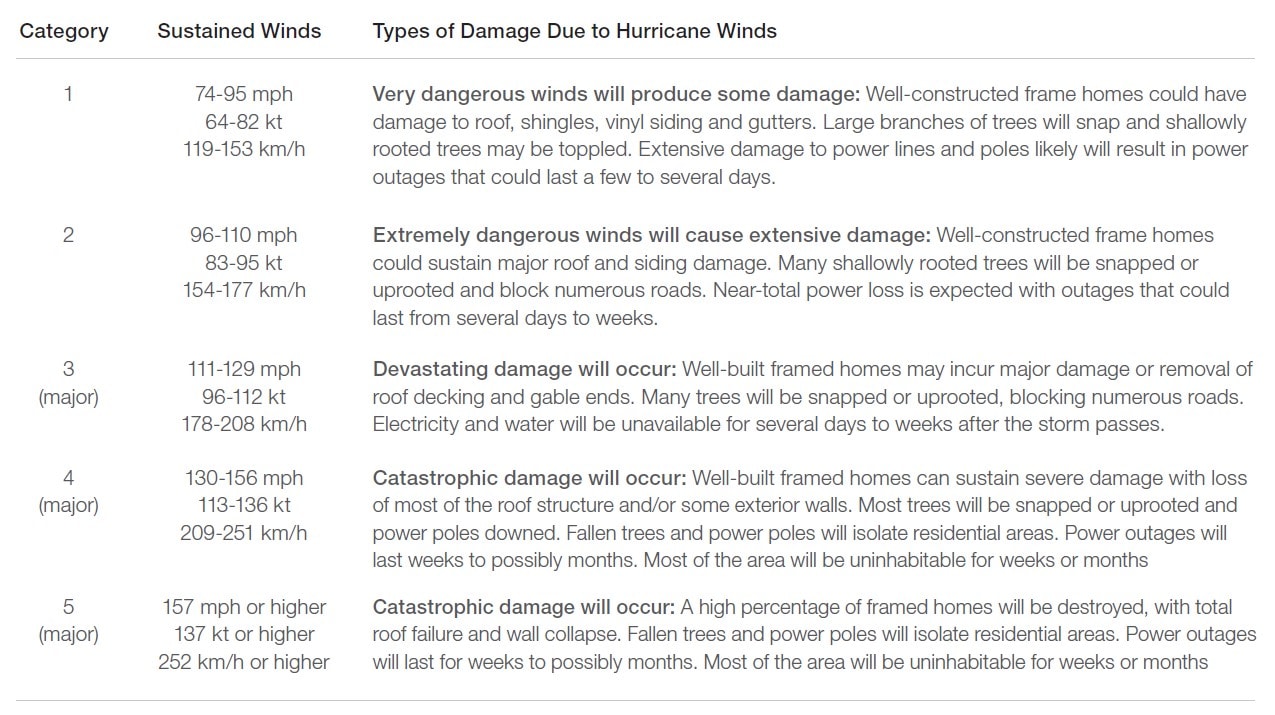September 2019 Articles:
- Surviving Hurricanes 2019 – A Guide for Businesses
- Preparing to be Resilient: Hurricane Preparedness
- Power Outages: Grid Reliability
- How to Avoid the Generator Installation Pitfalls
While the 2019 Hurricane Season started slowly, there has been a dramatic increase in activity in the last several weeks. The peak of the Atlantic hurricane season is mid-August through Early October. Hurricane Dorian slowly moved up the SE coast, after receiving the designation of being the most powerful Atlantic hurricane on record. The National Hurricane Center has also issued advisories for three other areas of low pressure as well as Tropical Storm Gabrielle, which is currently disorganized in the Eastern Atlantic.
In this article, Generac provides preparation information for the upcoming hurricane season and power outages that will accompany the storms. Hurricanes and tropical storms accounted for the most severe outages in 2017 and 2018, many of those outages lasting for several days.
- Hurricane Harvey cut power from more than 1.67 million customers1 and power restoration wasn’t completed in the hardest hit areas near Houston until September 8, which left many without power for 14 days.
- In 2017 Hurricane Maria alone topped the largest outages in US history with 1248 million2 customers without power, and many still off the grid in 2019.
- Hurricane Irma knocked out power to 6.7 million utility customers in Florida alone, 64 percent of the state, according to the Florida Division of Emergency Management3. One hundred thousand of those customers were still without power nine days later.
- Hurricane Florence took out power for 976,0004 in the Carolinas and Virginia, with the flooding closing as many as 1,600 roads, including all roads in and out of Wilmington, North Carolina for several days5.
When the power goes out, life becomes significantly more difficult, regardless if it is during a severe thunderstorm or a hurricane. Backup generators give a layer of safety and security not found in the dark.
 As backup power experts, Generac aims to provide peace of mind when power is out or unreliable. The aging power infrastructure and growing intensity of severe weather, including hurricanes, can make for uncertainty.
As backup power experts, Generac aims to provide peace of mind when power is out or unreliable. The aging power infrastructure and growing intensity of severe weather, including hurricanes, can make for uncertainty.
Information in This Article Came From:
- Generac product experts and their experiences with the products talked about and experiences in hurricane weather;
- Government organizations including FEMA, National Oceanic and Atmospheric Association, National Hurricane Center, Ready.gov, Center for Disease Control (CDC) and US Energy Information Administration, Energy.gov
- Education organizations such as Colorado State University.
2019 HURRICANE PREDICTIONS
High-Activity Era
NOAA has determined the Atlantic remains in a period of increased hurricane activity. Every 25-40 years, a “high-activity era” produces “more, stronger and longer-lived storms,” dating back to the 1800s (and likely earlier, however tracking or recording abilities were not reliable before then). It is part of a natural, cyclical pattern; a period of decreased activity usually follows, often lasting a similar amount of time.
The current high-activity era began in 1995, according to NOAA. During this time, the number of major hurricanes produced in the Atlantic nearly doubled since the last low-activity period (1971-1994). There has been an average of two hurricane landfalls in the Atlantic per season during this time.
NOAA experts watch several global climate patterns that drive the development and strength of hurricanes during a high-activity period, including Atlantic Multi-decadal Oscillation (AMO) and El Niño/Southern Oscillation (ENSO) influences.
2019 Hurricane Predictions
Even though it is a high-activity era, each year can be different in how much activity is seen. Every year, predictions for the upcoming hurricane season are released between April and June, before the hurricane season officially begins June 1. These predictions consider many things:
- El Niño/La Niña
- Sea surface temperatures
- Wind shear
These factors help determine if it will be a busy hurricane season or a calm one. However, these remain predictions. No matter the prediction, it is important to prepare as if a hurricane will affect your area.
In April, Colorado State University’s Department of Atmospheric Science said it may be a quieter than normal hurricane season, predicting 13 named storms, five of those turning into hurricanes and two growing into major hurricanes (Saffir-Simpson Category 3 or above). Last year, 15 named storms developed and eight turned into hurricanes, two being major storms.
The Colorado State researchers believe the water-warming El Niño is forecasted to develop in the Atlantic this summer, which could suppress some storms’ growth.
The National Hurricane Center and NOAA have not shared their 2019 Hurricane Season predictions at the time of publication of this guide.
These predictions are still early and conditions can change by the time hurricane season begins on June 1. Colorado State University and NOAA will update predictions at the start of the season, and will likely update again mid-summer.
WHAT’S NEW IN 2019
A New Hurricane Scale
Earlier this year at the 2019 American Meteorological Society’s annual meeting, AccuWeather debuted their new hurricane rating system. There have been calls from various groups to update the current system, the Saffir-Simpson scale, which only rates hurricanes based on sustained wind forces (top wind speed). Recent storms have showed that hurricanes with lower wind speeds cause more damage than what they’re categorized as due to slow movement and a large amount of rainfall.
What This Means
According to AccuWeather, the RI scale would differ at times from the Saffir-Simpson scale.
For example, NOAA listed Hurricane Harvey as a Category 4, but RI says it would have been a Category 5 because of the economic impact on the Houston region.
IMPORTANT: There will likely be reports from news stations that include both measurement systems. While the category numbers may differ, it is important to listen to local authorities when they issue evacuation orders or other safety precautions.
How to Know if a Storm is Dangerous: What to Listen For
When meteorologists begin mentioning “developing” conditions for a possible tropical storm or hurricane, it is not time to panic. From June 1 to November 30, conditions are ripe for the development of hurricanes and for those storms to hit the Atlantic and Gulf coasts. However, not every storm monitored will hit the United States. When a meteorologist begins tracking a storm, it is not guaranteed to hit. Many storms are monitored while still developing off the Western African coast, but many factors come into play to determine if those systems will reach the United States, and if those systems will be hurricanes or if they melt away.
On the next page, are hurricane terms that are often used when monitoring a storm system likely to turn into a hurricane. It’s important to understand them and know when to start preparing or evacuating homes, as well as when a system will not be a threat.

- Advisory: Official message issued by storm warning centers with details on location, intensity, movement and precautions for storms.
- Direct Hit: Locations that experience the center and eye wall of a hurricane.
- El Niño, La Niña, ENSO: El Niño and La Niña are warming and cooling phases of a recurring climate pattern in tropical Pacific (aka El Niño-Southern Oscillation or ENSO). The pattern shifts every two to seven years, creating disruptions in temperature, wind and precipitation. These changes affect the number and intensity of hurricanes.
- Flash Flood: A rapid flooding in low-lying areas that may be caused by heavy rain as seen with many hurricanes and tropical storms.
- Flood Warning: Issued when a flood is imminent or already happening.
- Hurricane/Typhoon/Cyclone: A cyclone, typhoon and hurricane are all the same type of storm – a tropical cyclone that has reached 74 mph or more – just given different names based on where in the world it hits.
- Hurricane Eye: The center of a hurricane.
- Hurricane Eye Wall: Extreme winds surrounding the Hurricane Eye. An Extreme Wind Warning can be issued as the Eye approaches.
- Hurricane Warning: Issued 36 hours in advance of expected hurricane force winds (sustained at 74 mph). The warning may stay in effect if dangerously high water or dangerously high water and waves continue, even if winds dip below hurricane force. Hurricane Watch: Issued 48 hours in advance of possible hurricane force winds (sustained at 74 mph or higher). Hurricane preparation becomes more difficult when winds reach tropical storm force.
- Indirect Hit: Locations that do not experience a direct hit from a hurricane or tropical storm, but do experience the hurricane force winds.
- Landfall: When the Eye of the storm meets with the coastline.
- NOAA: National Oceanic and Atmospheric Association, an agency within the Department of Commerce that works to understand and predict changes in climate, weather and oceans. The National Weather Service (NWS) is a branch under NOAA.
- Real Impact Scale: Developed by AccuWeather and used for the first time during the 2019 hurricane season. Measures storms on a scale of one to five based on flooding, rain, high winds, storm surge and economic impact.
- Saffir-Simpson Hurricane Wind Scale: Most popular and recognized hurricane rating system, created in late 1960s and expanded in 1970s (shown on the next page). Measures hurricanes on a scale of one to five based on sustained wind speed.
- Storm Surge: An abnormal rise in sea level due to a hurricane or other severe storm. This is often the greatest threat to loss of life and property damage.
- Storm Tide: A combination of normal high tide and storm surge, measuring the total seawater level during a storm.
- Tornado Warning: Due to the high winds and cyclical nature of hurricanes, tornadoes can form. A Tornado Warning may be issued before, during or after hurricanes. A warning means it may occur within 36 hours.
- Tropical Storm: A tropical cyclone with maximum sustained wind speed ranging from 39 to 73 mph.
- Wind Shear: Strong high-atmospheric winds typically found during El Niño that blows the tops off storms, decreasing the likelihood they turn into tropical storms or hurricanes.
SAFFIR-SIMPSON HURRICANE SCALE
WHY SHOULD ORGANIZATIONS CARE ABOUT HURRICANE RISK
If your organization is vulnerable to hurricanes, it is important that you understand your risk, develop a preparedness and mitigation plan and tack action. According to FEMA, it is important to first identify your risk. The agency reports that 80 percent of a building’s value is in its equipment, inventory and other contents. Depending on your type of organization, the agency says you should expect that either 50 percent of your inventory is unsellable or that 50 percent of your computers or other equipment has been damaged during the event.
To address if your business is ready, you need to identify potential impact on your systems/structure, staff, vendors, suppliers as well as your organization itself. After identifying the potential risks, it is important to decide on solutions that will help reduce risk.
BEFORE/DURING/AFTER CHECKLIST
Before:
- Get a backup generator
- Review emergency plans if the power goes out for an hour up to multiple days
- Review emergency plans for evacuation
- Check insurance policy/coverage
- Conduct maintenance on backup generator
- Check the landscaping for any trees that should be trimmed clear gutters, etc.
- Turn off electricity to the facility
- Use hurricane shutters or board up windows and doors with 5/8 inch plywood
During:
- Monitor updates with a radio or television
After the Storm:
- If there is severe damage to the facility, leave immediately and contact local officials
- Check for gas leaks. If there may be a gas leak, leave immediately and contact a professional to check the line, report it to local authorities
- Report downed power lines to the utility company and local police and fire departments
- Report losses to insurance
- Take photos of the property
- Make a list of any missing or damaged property
- Wear protective gear while cleaning
- Consider contacting contractors to clean up large debris
- Keep receipts for possible reimbursement programs through insurance, city or US government programs
- If power is out, unplug all major appliances before turning the electricity back on to minimize possible surge damage
- If the facility flooded, have a professional electrician check the residence before turning electricity on
SUMMARY
Preparation well in advance and immediately before a hurricane can help limit damage, keep workers safe and get you back to business more quickly. While developing a hurricane emergency plan, assign roles to team members. Also, it is important to establish communication procedures and to compile a list of important phone numbers. Make plans for securing materials and back up your business data. You may want to review your insurance policies to see if you are covered for water or flood damage.
Being prepared is an ongoing process of improvements. Processes should be reviewed and checked regularly. Preparing to a standard will provide a uniform and consistent basis for developing and implementing action plans within the organization and proper preparedness will help your corporation minimize loss of revenue, data, or productivity. The disruption of operations for a few hours or a few days can deeply affect your organization internally and externally. Making the choice to prepare today can protect your corporation tomorrow.
1. Hurricane Harvey Event Analysis Report. 2018, Hurricane Harvey Event Analysis Report.2. Schmidt, Amanda. “Which Storms Top the List for the Most Power Outages in US History?” Which Storms Top the List for the Most Power Outages in US History?, AccuWeather, www.accuweather.com/en/weather-news/which-storms-top-the-list-for-the-most-power-outages-in-us-history/70003178.3. Hodge, Tyler, and April Lee. “Hurricane Irma Cut Power to Nearly Two-Thirds of Florida’s Electricity Customers.” Hurricane Irma Cut Power to Nearly Two-Thirds of Florida’s Electricity Customers – Today in Energy – U.S. Energy Information Administration (EIA), U.S. Energy Information Administration, Dec. 2017, www.eia.gov/todayinenergy/detail.php?id=34232.4. Panettieri, Joe. “Hurricane Florence Power Outages: 976,000 In North and South Carolina So Far.” ChannelE2E, 16 Sept. 2018, www.channele2e.com/ technology/business-continuity/hurricane-florence-power-outages/.
5. Stradling, Richard, and The News & Observer. “Hurricane Florence Closed 1,600 Roads in NC; Soon All but One Will Be Open Again.” Greensboro News and Record, 11 Apr. 2019, www.greensboro.com/news/state/hurricane- florence-closed-roads-in-nc-soon-all-but-one/article_4325a402-df75-56f7- ab63-fcc0877b7b1e.html.
PREPARING TO BE RESILIENT: HURRICANE PREPAREDNESS

Power outages happen for several reasons. Mother Nature can be blamed for many power failures. According to the Edison Electric Institute, 70-percent of power outages in the U.S. are weather related. Some operations mandate an onsite emergency power backup system, like hospitals, data centers, water and sewage facilities and other buildings that protect public health and safety. For businesses that do not require a backup system, having a generator onsite is still one of the best ways to avoid financial losses from power outages. Equipment can pay for itself in the end by helping the owner avoid financial losses from power outages. In some cases, the purchase price of a generator is recovered within a single year or even within the timeframe of a single severe outage.
A report from Frost & Sullivan Research found that in the past year, 50-percent of companies experienced an outage lasting longer than one hour. According to a survey done by Information Technology Intelligence Consulting, 98-percent of organizations say one hour of downtime costs them over $100,000.
According to the National Hurricane Center, hurricane season lasts from June 1 to November 30, so a permanent backup generator can be an invaluable safety net for businesses in at-risk areas. The time to prepare for an inevitable storm is now. According to climate scientist at NOAA, as the climate continues to warm, we can expect the trend of larger, slower, more powerful and more destructive hurricanes to continue.
To prepare for any outage, make sure your generator is ready to perform. . If your generator requires stored on-site fuel, stocking up on fuel is one of the most important things you can do. Getting fuel can be challenging after a storm hits and it is easy to run out during extended outages. Generac recommends having enough fuel to last at least three days. Units after the storm can run 24/7 and will need to be serviced more frequently. However, according to the NFPA 110, fuel tanks that are subject to temperature variations can experience accelerated fuel degradation, especially if the tanks are outside and above ground. The presence of water can lead to microbiological contamination and growth, which in turn can lead to general or pitting corrosion of steel tanks and components, possibly resulting in filter plugging, operational issues or a hydrocarbon release into the environment. By comparison, natural gas generators avoid those fuel supply and maintenance issues. The natural gas pipeline network is robust. According to a 2013 report by Massachusetts Institute of Technology’s Lincoln Laboratory, natural gas distribution systems operate at a reliability rate exceeding 99.999%, with the exception of seismically active areas. Incidentally, that makes the natural gas distribution system approximately one-thousand times more reliable than a single-engine generator set, which is typically assumed to be 99% reliable.
It is also advised that you start the unit before the storm to make sure everything is running properly. Generac recommends exercising generators weekly. If the application will allow it, put facility load on the generator monthly. That will create the highest sense of reliability and ensure the generator is up to the task of running the facility. By running necessary exercises and tests on the generator, as well as following all of the laws and regulations, your Generac generator will be ready to tackle any storm.
FEMA also recommends a business take these following steps to prepare your company for a disaster:
- Develop a Business Continuity Plan: This plan will make sure that personnel are protected and assets function properly.
- Minimize Impact to Essential Operation: By acquiring equipment, like a generator, it increases your company’s opportunity to continue to operate. A generator can keep the power on during and after a storm and make sure key business functions continue as normal.
- Protect Data and Information: Protecting key information will ensure decisions can continue to be made to facilitate organization recovery.
- Increase Reliability: Give your organization the ability to mitigate all-hazard conditions.
- Protect Market Share and Minimize Financial Losses: Proactive planning and accounting for recovery resources before they are needed will make sure things go smoothly.
Preparation well in advance and immediately before a hurricane can help limit damage, keep workers safe and get you back to business more quickly. While developing a hurricane emergency plan, assign roles to team members. Also, it is important to establish communication procedures and to compile a list of important phone numbers. Make plans for securing materials and back up your business data. You may want to review your insurance policies to see if you are covered for water or flood damage.
Being prepared is an ongoing process of improvements. Processes should be reviewed and checked regularly. Preparing to a standard will provide a uniform and consistent basis for developing and implementing action plans within the organization and proper preparedness will help your corporation minimize loss of revenue, data, or productivity. The disruption of operations for a few hours or a few days can deeply affect your organization internally and externally. Making the choice to prepare today can protect your corporation tomorrow.
For more on the consequences of power outages and what you can do to prepare yourself, contact us.
POWER OUTAGES: GRID RELIABILITY
On July 13, 2019, a blackout in Manhattan shut down subways, Times Square’s marquees and caused Broadway plays to be called off. The outage lasted for over 5 hours and according to the utility company, Con Edison, at the height of the outage, 72,000 customers were in the dark. Con Edison said it could take months to investigate why the outage happened, but it could have been worse. That night, the outages were an inconvenience, but it does show the problems associated with an increasingly vulnerable power grid. Facility managers are seeing a need to increase their resilience, emergency preparedness and backup power plans in such times of outages.
It’s not a matter of it, it’s a matter of when will the power go out. Power outages happen for several reasons. According to the Edison Electric Institute, 70-percent of power outages in the U.S. are weather related, but other causes include vehicle accidents, equipment failure, animals and an overworked power grid. Peak energy demand is when electrical power is expected to be provided for a sustained period at a significantly higher than average supply level. When maximum supply levels are surpassed, power outages can happen.
Demand response (DR) is one way to secure grid reliability or financial gain. DR programs reduce demand on the utility supply in the event of a utility grid emergency. They do this by allowing the local electric utility, typically an Independent System Operator (ISO) or regional electric utility company, to automatically and remotely use an organization’s on-site generators, transferring some or all of a facility’s load from the grid to the generator. They also trigger load reduction through commercial and industrial building automation systems that act on lighting, HVAC and other mechanical loads. DR programs provide a no-risk, no-cost opportunity for organizations to help offset the capital and operational cost of a stationary generator set. Participants can earn money, save on energy costs and help maintain reliable electricity throughout their city, thereby avoiding blackouts or brownouts.
DR is most viable for natural gas generators rather than diesel generators, as the costs for achieving diesel emissions compliance in a nonemergency application often exceed the potential benefits of participating in a DR program. For example, in 2013 the U.S. Environmental Protection Agency (EPA) put forth rules to allow diesel generators to operate for 100 hours per year for DR purposes. A group of environmental regulators and advocates along with centralized generation interests appealed the rule to the U.S. Court of Appeals, which overturned the 100-hour limit in 2015. As a result, diesel generators must undergo costly upgrades to meet the emissions standards to run in DR applications.
DR program participants receive recurring capacity payments for agreeing to allow their local utility to curtail their utility power consumption in response to abnormally high electricity demand. They also receive additional energy payments based on their performance during dispatches. Financial incentives vary, but DR can significantly offset the capex and opex of a generator system that would otherwise be viewed as just an insurance policy. For example, a 300 kW natural gas generator with approximately 200 kW of “enrolled load” would earn the customer $4,000 at enrollment and up to $3,000 per year for the peak energy generated.
Additionally, program participants usually pay less for electricity, whether they sign up for mandatory, voluntary or price-responsive programs. Rates may include a combination of credits, penalties or time-of-use charges, but they are generally lower overall for program participants.
For answers to all your power outage questions and more, download Generac’s Power Outage fact sheet and start preparing your business today.
HOW TO AVOID THE GENERATOR INSTALLATION PITFALLS
BY MUHAMMAD ARMAGHAN
Product Manager at Generac Power Systems
INTRODUCTION
Generac Industrial Power creates installation guidelines to help customers become acquainted with the general requirements for optimal operation of their engine generator set. The content contained is not intended to replace or supersede any/all the applicable local, state or federal codes and standards. It is important to always check with your Authority Having Jurisdiction (AHJ) for the codes or standards that apply in your area.
In addition, installation and initial startup of this equipment is not a “do-it-yourself” project. An authorized service dealer or other competent, qualified contractor must install the generator set. The initial startup must be performed and documented by a factory authorized service dealer. For more detail, refer to “Design Guide for Generac Industrial Spark Ignited Generators 10000046207” and “Installation Guidelines for Stationary Industrial Generators Manual 046622”.
GENERAL INSTALLATION GUIDELINES
To begin, when installing the generator, the set must be installed in a clean, dry area, which is easily accessible for maintenance and repair activities. It is recommended to have the generator installed in an area that is not directly exposed to the natural elements, such as flooding and tornadoes. Proper protection should be provided to keep the equipment as safe as possible. For the roof-mounted applications, the installation structure must be designed by an engineer in order to accommodate the structural and the vibrational requirements.
It is highly recommended, when picking a location for your generator, to keep a minimum of 6 feet of clearance all around the generator set. The unit should in turn be properly anchored down to the concrete pad or any other generator base support structure. If installed indoors, the generator room must be designed to accommodate the total required generator airflow (combustion + cooling).
The radiator discharge and the engine exhaust air must be routed outside of the generator room. It is encouraged to install the ductwork from the radiator outlet flange to the exhaust vent opening in a manner that prevents any recirculation of exhaust air back to the generator area. When required, the extended exhaust ductwork should be designed with as few bends as possible. When bends are necessary, they should be in the form of gradual sweeps to allow airflow with minimum restriction.
Flanged exhaust pipes, rated for at least 1500° F, are to be used and constructed of schedule 40 black iron, steel, or other suitable materials having adequate strength and durability. Using a flex joint between the engine connection point and the rigid piping is encouraged. In addition, it is recommended to use a flexible exhaust bellows to allow for linear and/or axial movement of rigid piping due to thermal expansion/contraction.
If used, Generac open units are shipped with the loose catalytic converter for onsite installation. For such units, use the generator specific installation drawing to properly locate the oxygen (O2) sensor for the emissions monitoring system. If the O2 sensor and catalyst are not correctly installed, the emissions system will not work properly and the unit may not comply with its EPA certification. Such conditions may also lead to engine damage. The catalytic convertor and the silencer must be externally supported and should not be supported off the engine. The exhaust piping can be extended to route the exhaust to the desired location however, the exhaust backpressure must be calculated and the piping must be sized to keep the exhaust backpressure at the engine acceptable range.
Do not install blankets on the exhaust manifolds, turbocharger housings or other engine components. The use of manifold blankets can result in their premature failure. The shore power circuit, which is required to power up the generator auxiliaries, should be properly designed to accommodate the power requirement of all the available auxiliary equipment of the generator. The generator must be properly grounded and the wire carrying AC power should be separated from the DC wires. In addition, the communication wires should be routed in a separate conduit as well.
SPARK IGNITED GENERATOR FUEL PIPING REQUIREMENTS
The fuel line should be free of leaks and adequate ventilation is essential. The fuel supply must accommodate for fuel consumption rates at 100% load. The supply pressure and volume must meet the requirements described in the unit submittal packet, if specifications are not met, the generator will not operate properly and will probably display symptoms, such as hard starting, rough running, inability to carry load, and erratic operation.
A primary regulator must be installed between the utility gas supply line and the generator gas inlet port. It is recommended to allow a minimum of 10 feet between the primary regulator and the generator. The regulator should be designed at 1.5 x greater than the 100 percent required fuel flow rating of the gen-set. Calculations should be made using a specific gravity of .65 for NG and 1.6 for LPG-V. The required fuel pressure to the unit should be measured at the factory-provided gen-set test port, prior to the start up. The pressure when the unit is cranking and the pressure while the unit is running at full rated load (kW) should be equal or less than 2 in. w.c below the static pressure. Black Iron piping is used for NG and LPG-V fuels. When installing LPG-L, the industry standard is copper pipe.
A stainless steel braid flexible hose (flex hose) between the generator connection point and the rigid black iron supply piping is also required. The flex hose shall be directly connected to the fuel connection inlet at the generator rail without any pipefittings installed between the flex hose connector end and the generator connection point. The flex hose needs to be installed in a straight-line perpendicular to the generator set rail with no kinks or bends. The supplied flexible hose is not to be installed underground or in contact with the ground. It should be connected between the rigid supply piping and the connection fitting on the base of the generator set. Local fuel code may vary widely, please contact us for more details.
CONCLUSION
These installation guidelines are intended to help customers become acquainted with the general requirements for optimal operation of their engine generator set. For more information about these concepts or the variety of Generac products available, contact us.
AUTHOR BACKGROUND
Muhammad Armaghan is a Product Manager at Generac Power Systems. He is responsible for the Industrial Generator product line. Armaghan has experience working in industrial power generation markets and has supervised several multimillion-dollar projects throughout Unites States. These include power plants, healthcare facilities, data centers and municipal projects. Armaghan has also worked closely with consulting and specifying engineers, as well as general and electrical contractors and end users.






